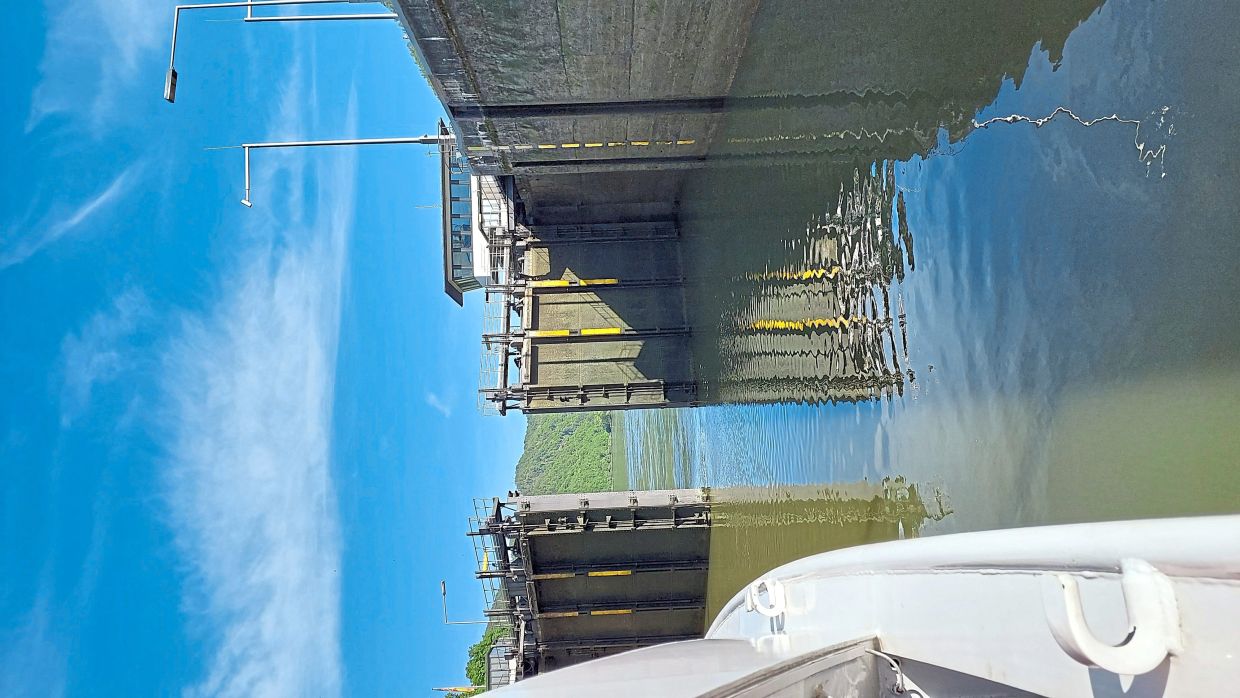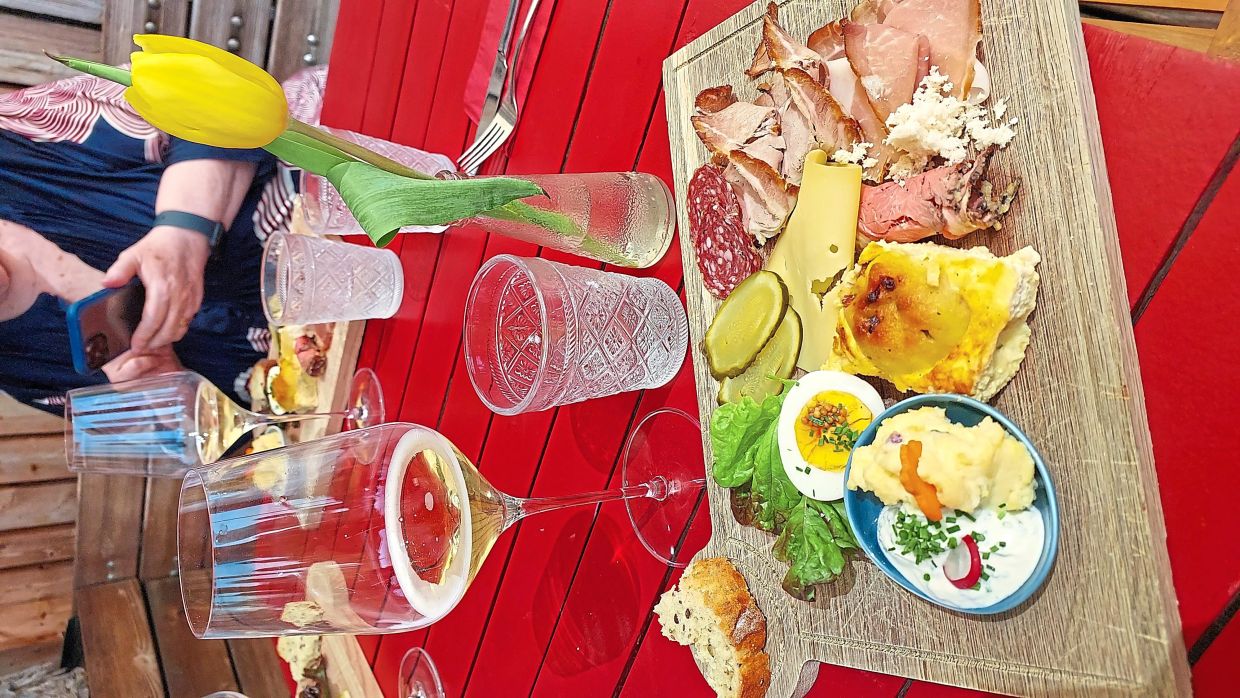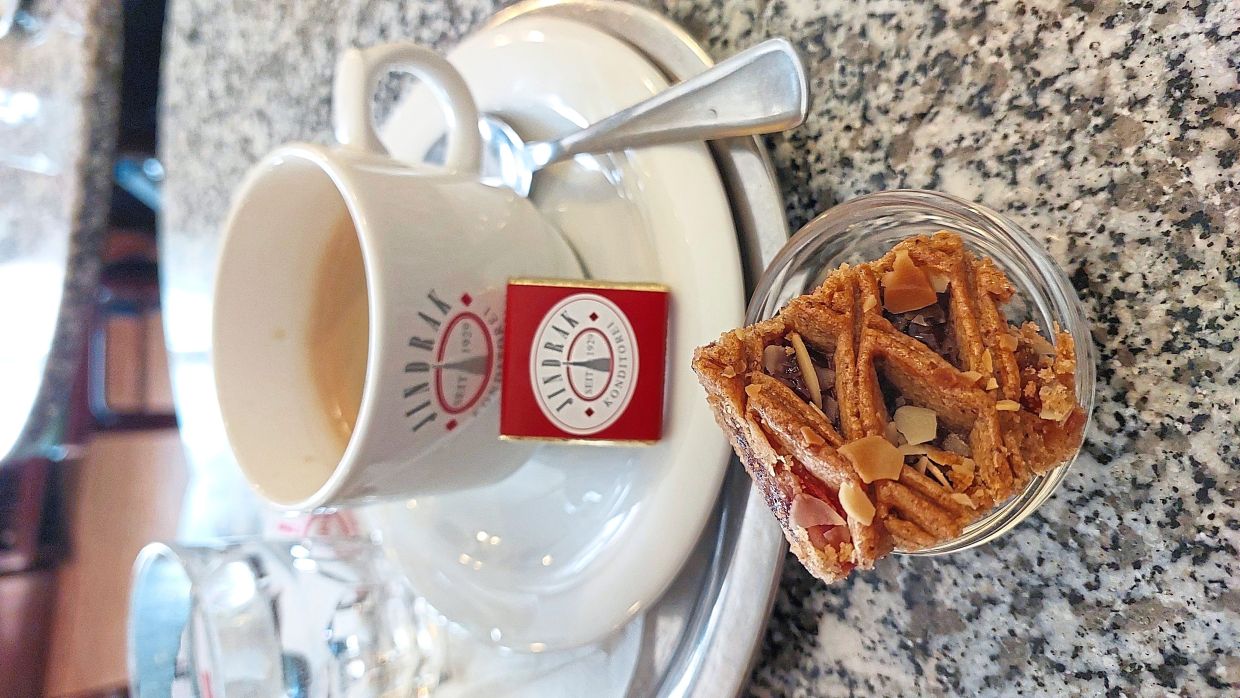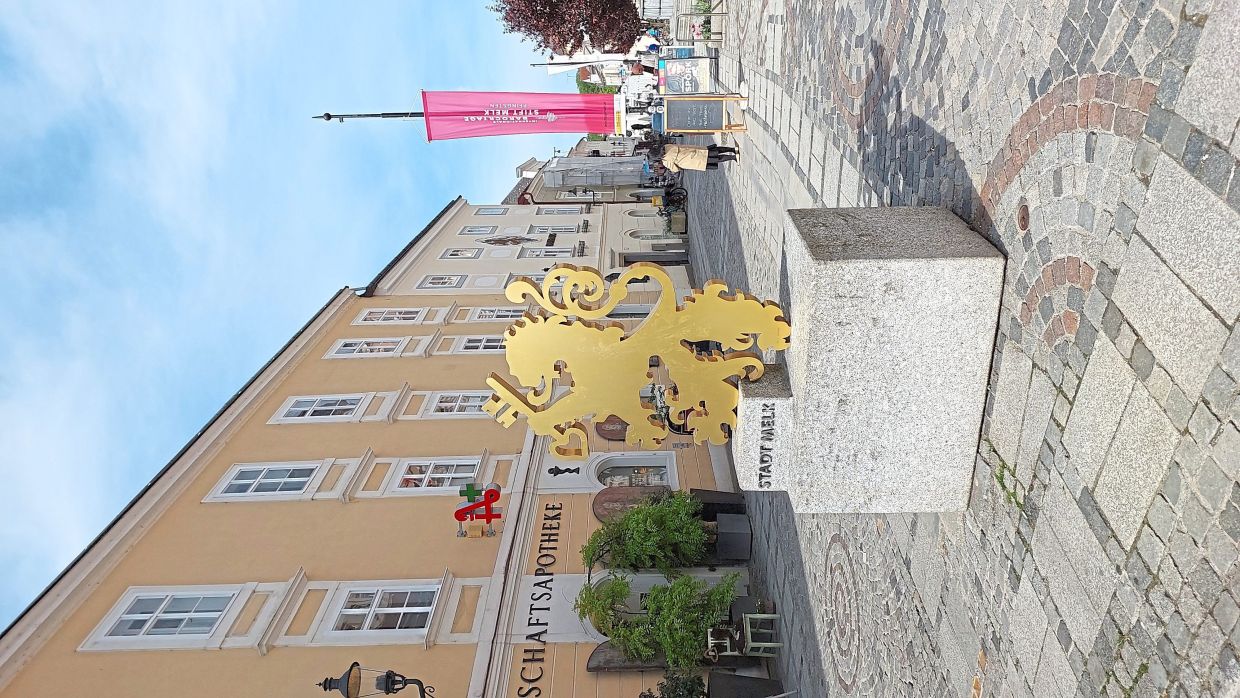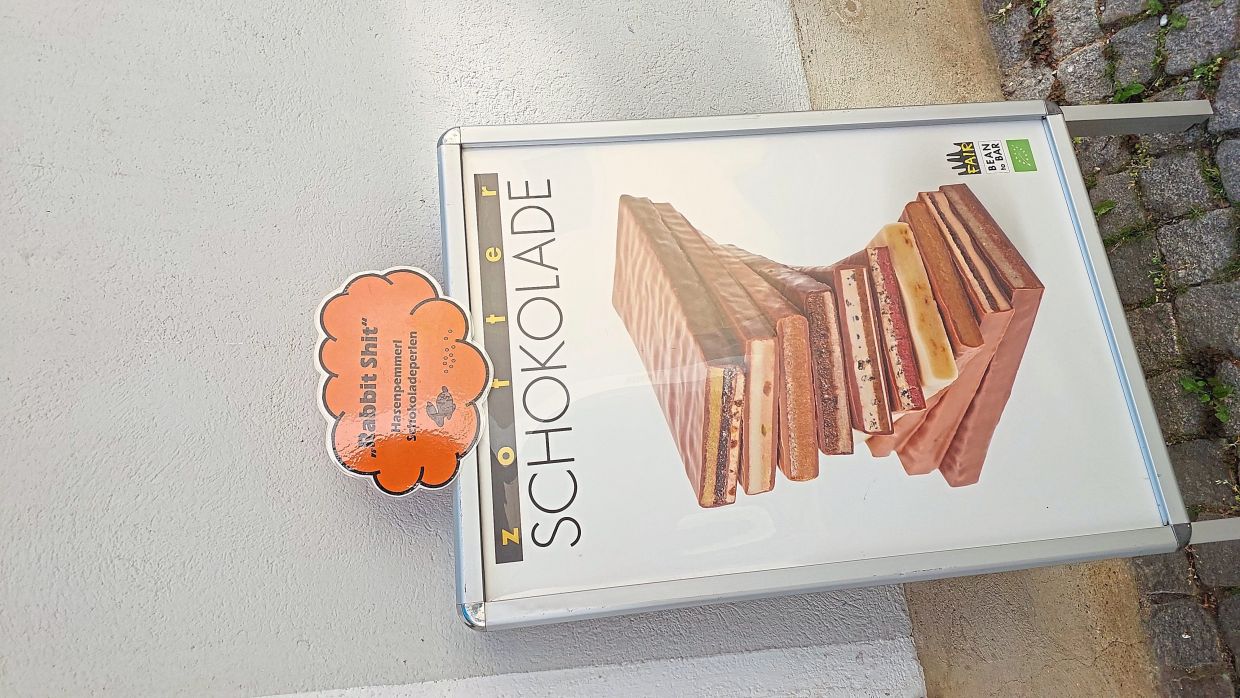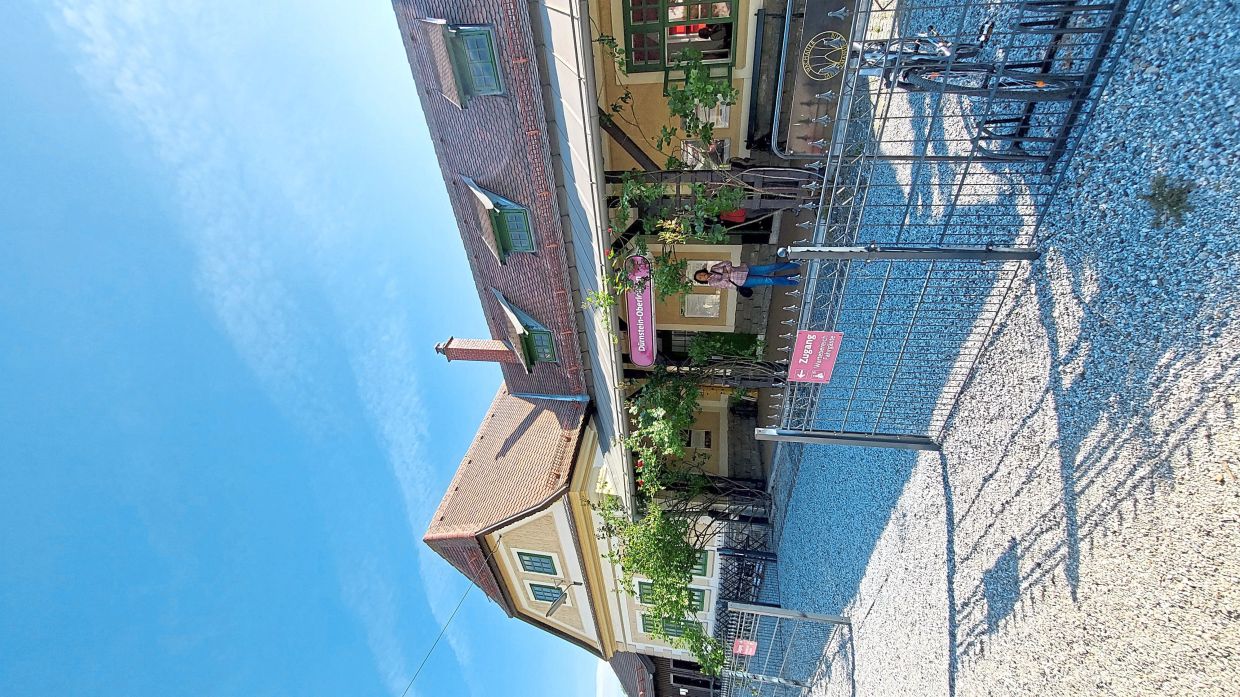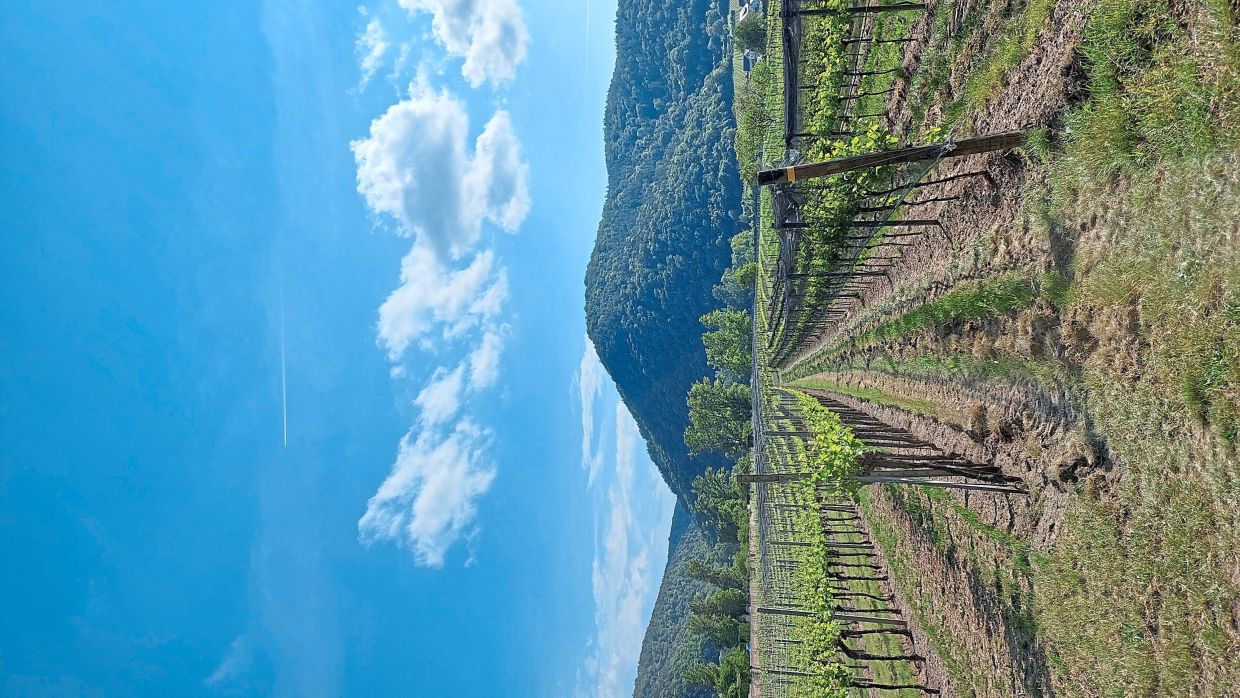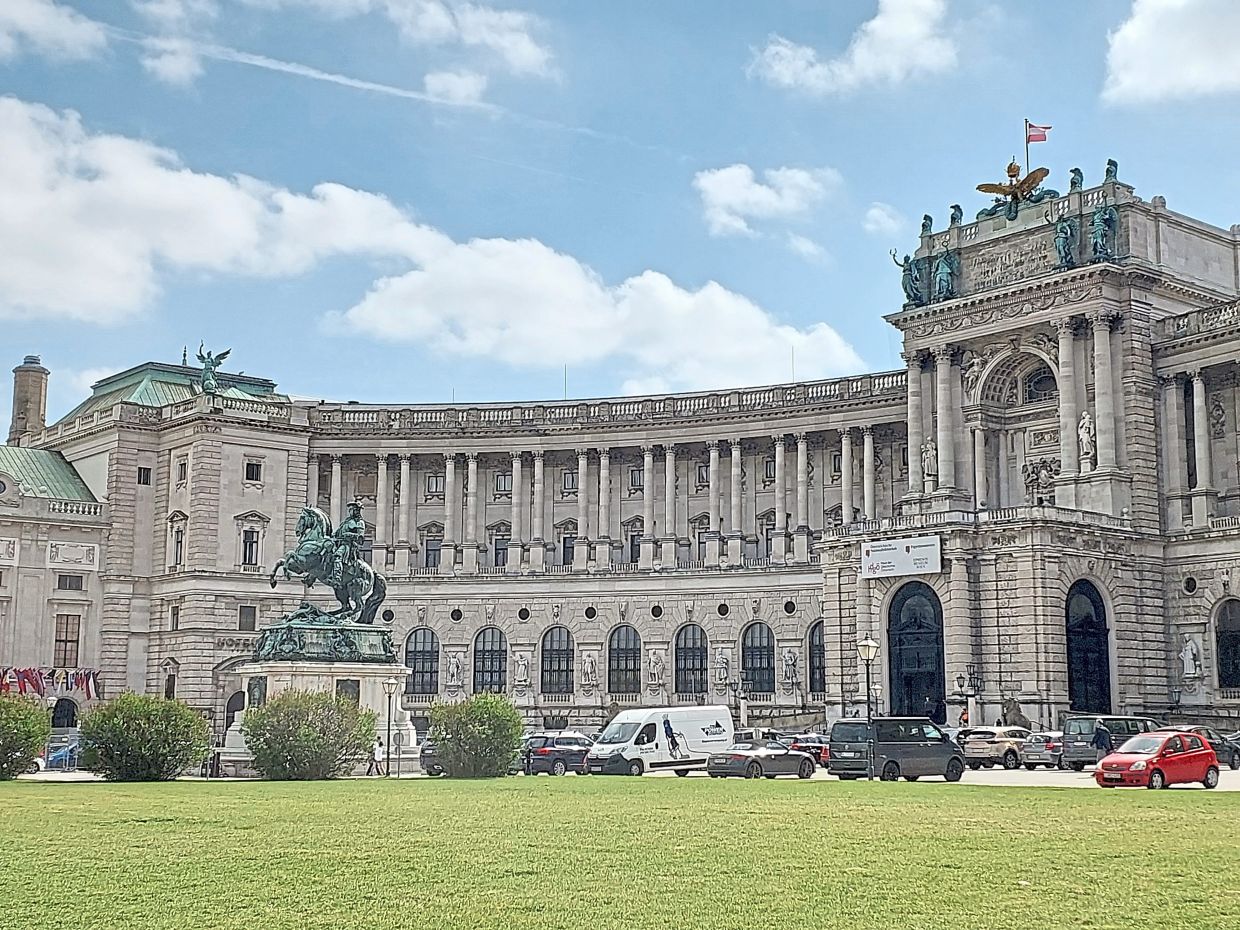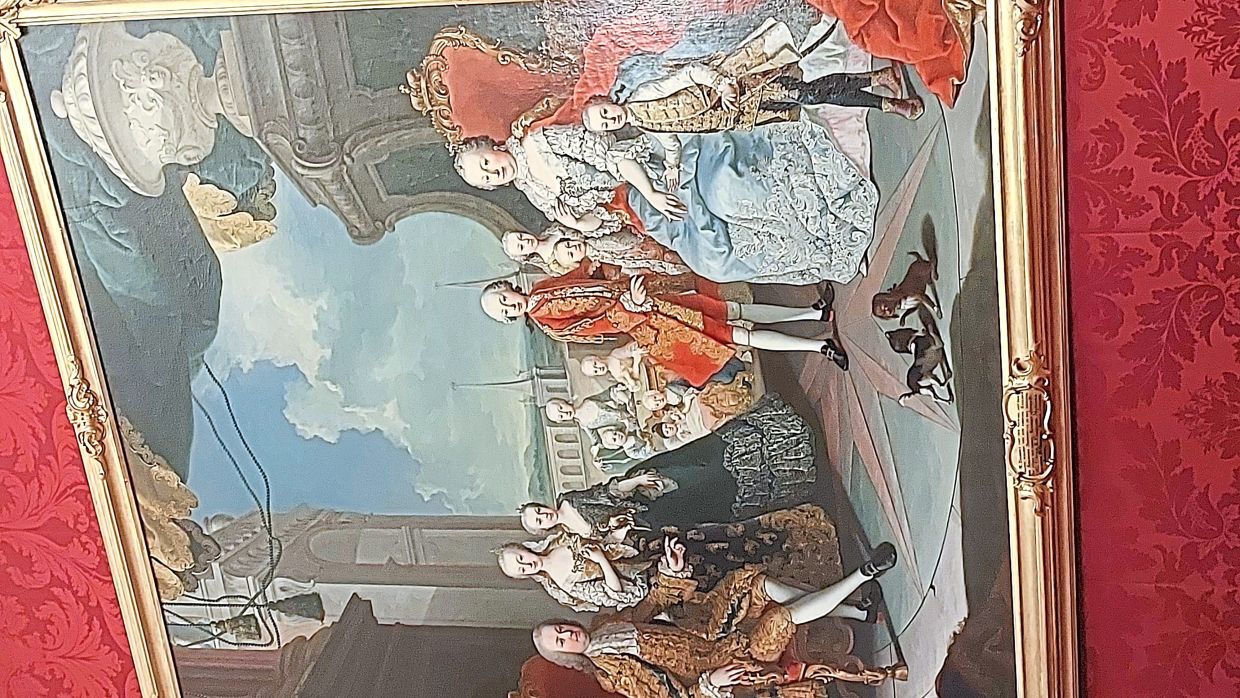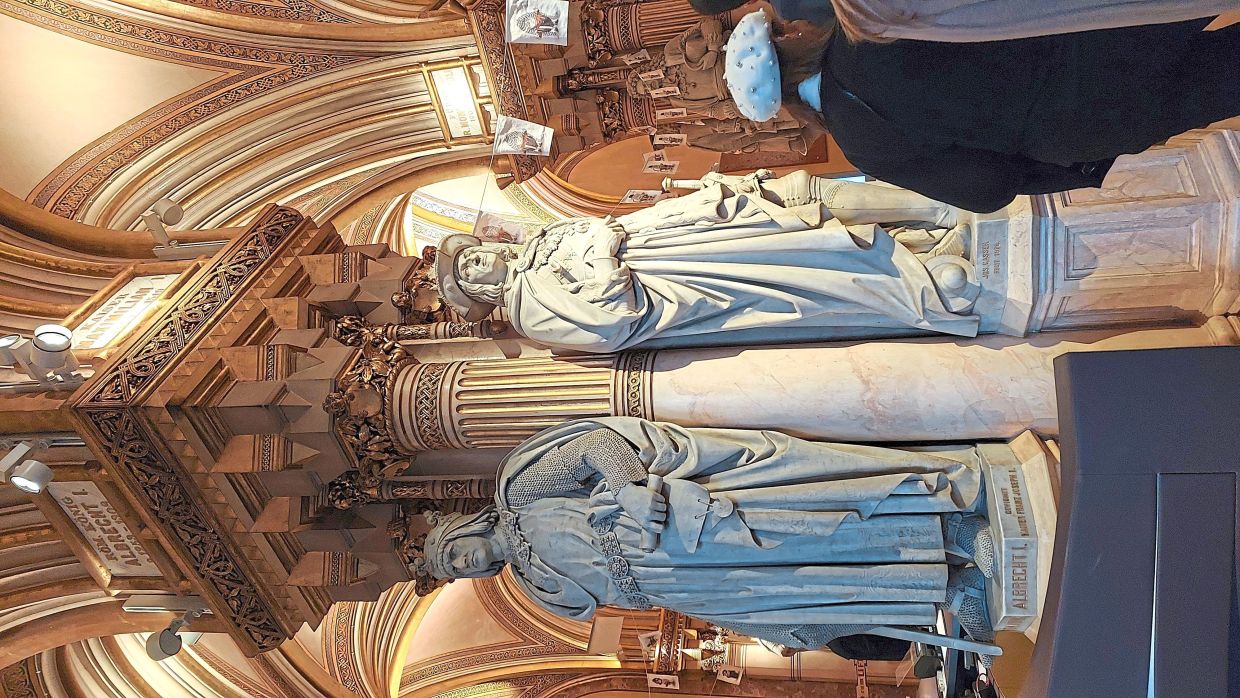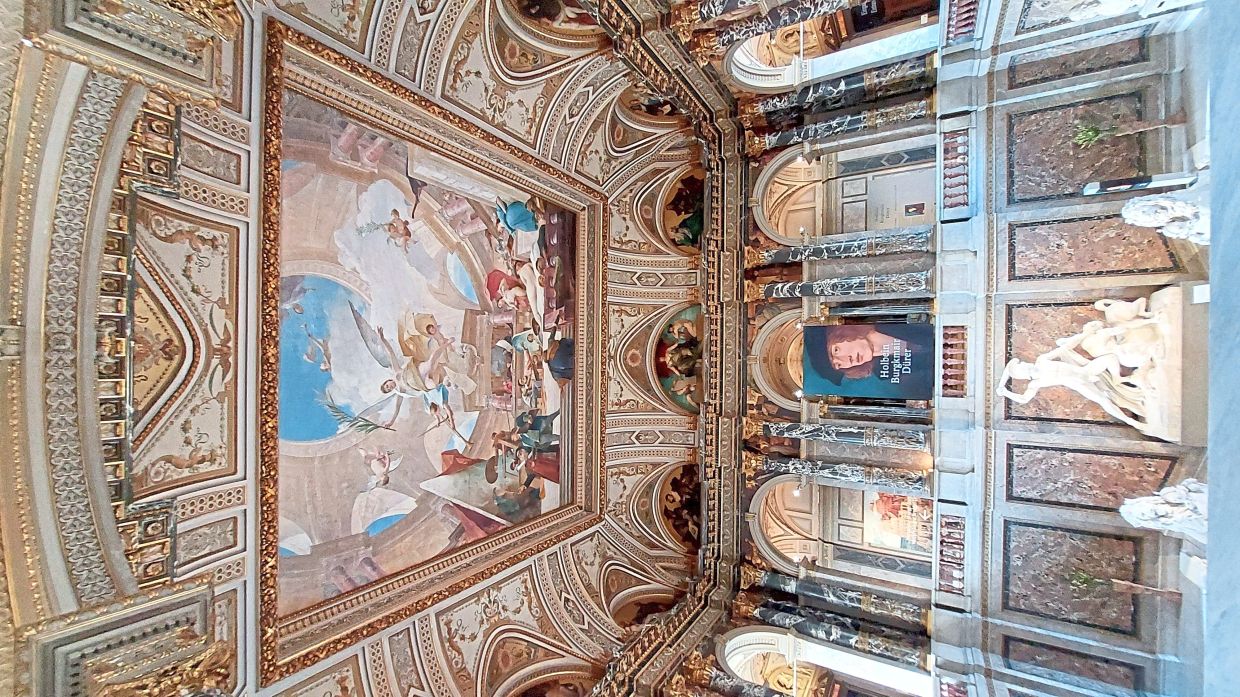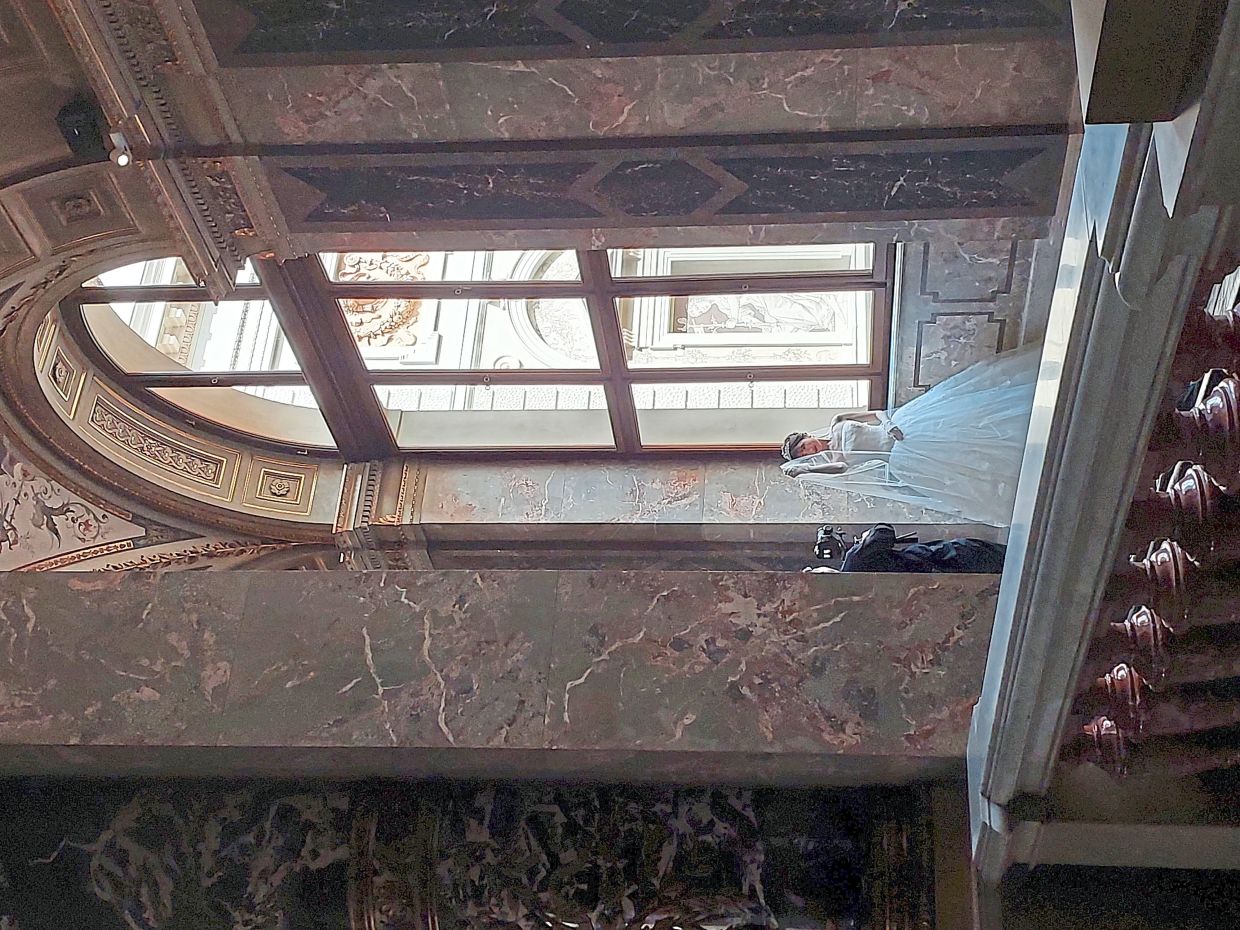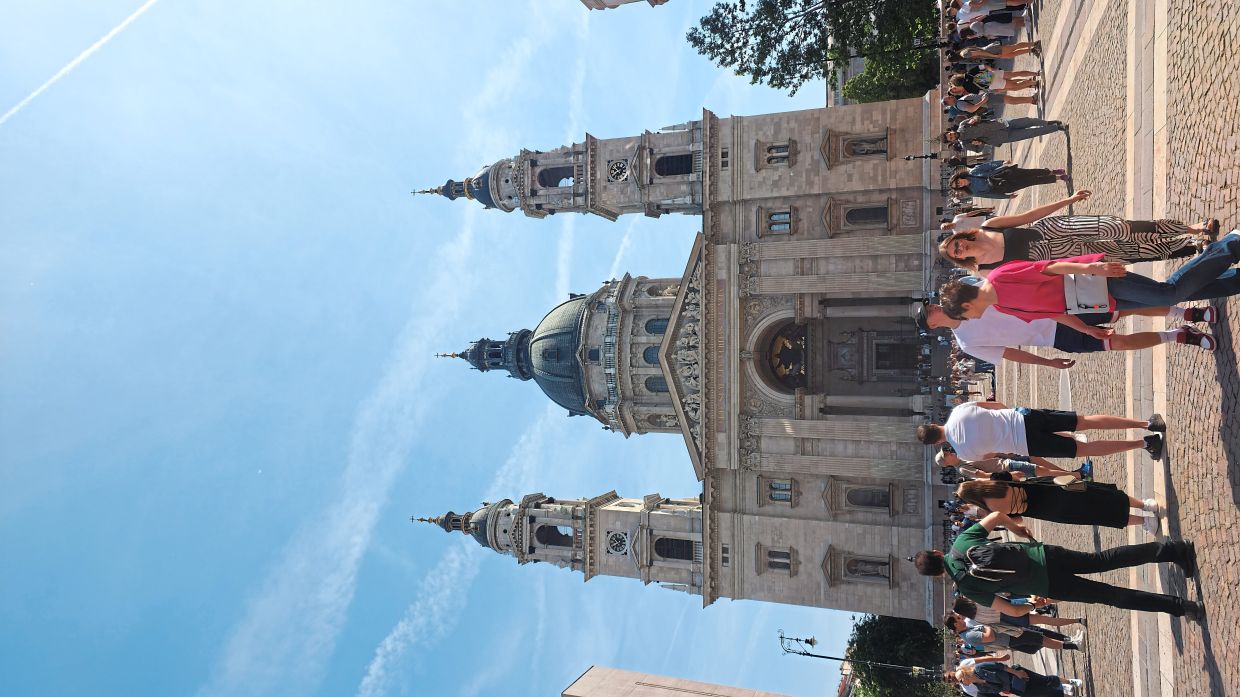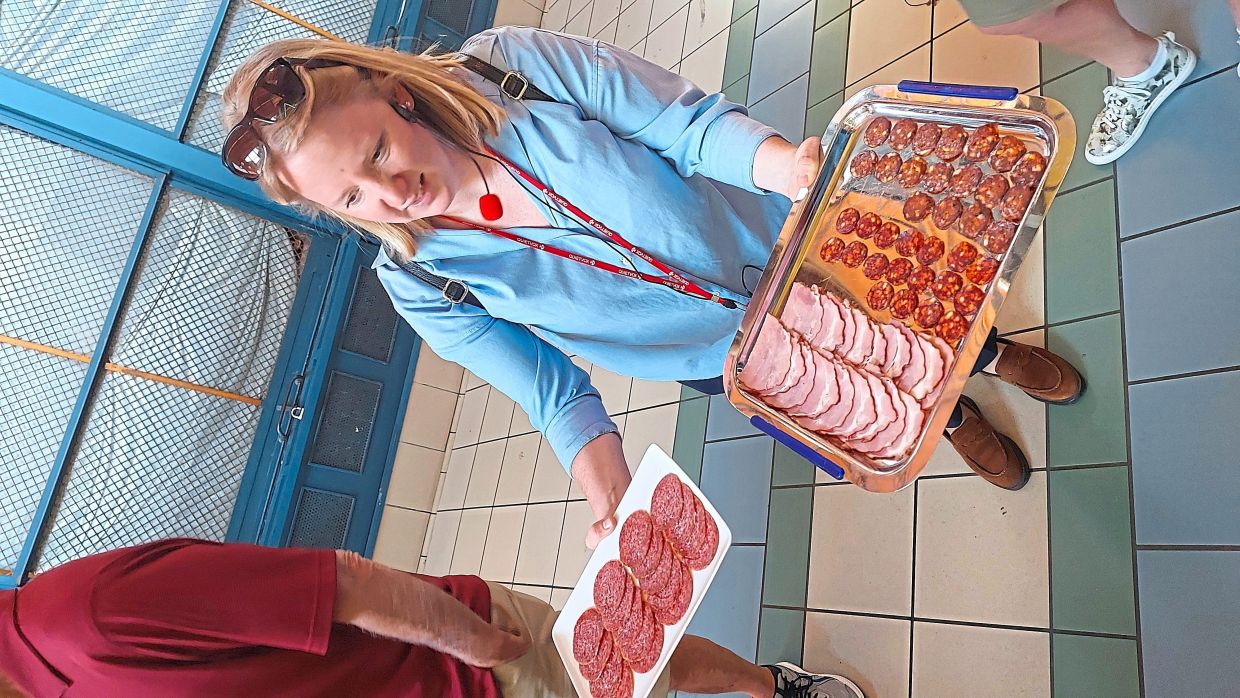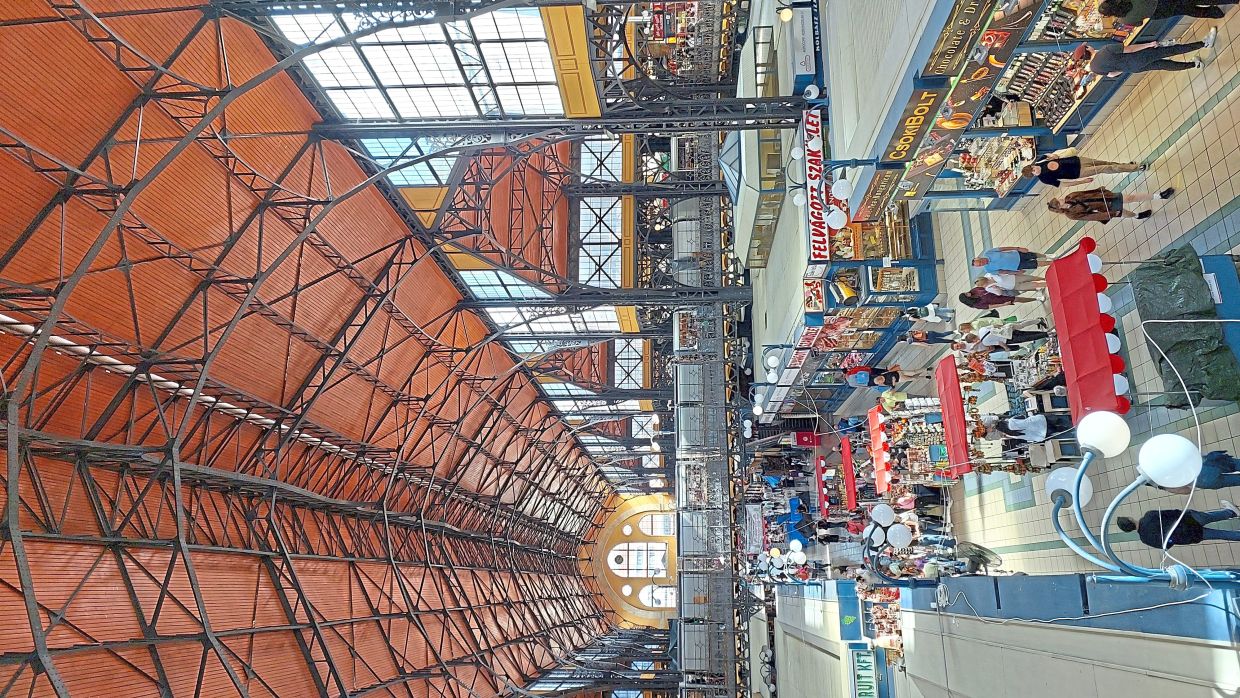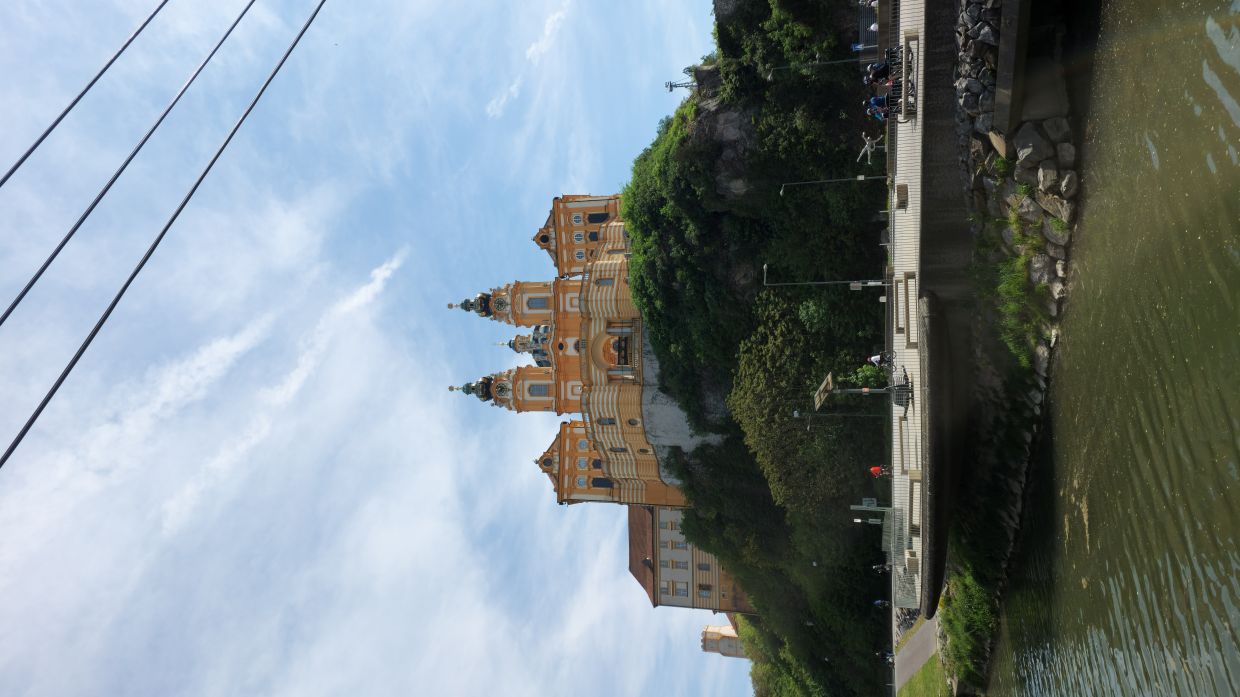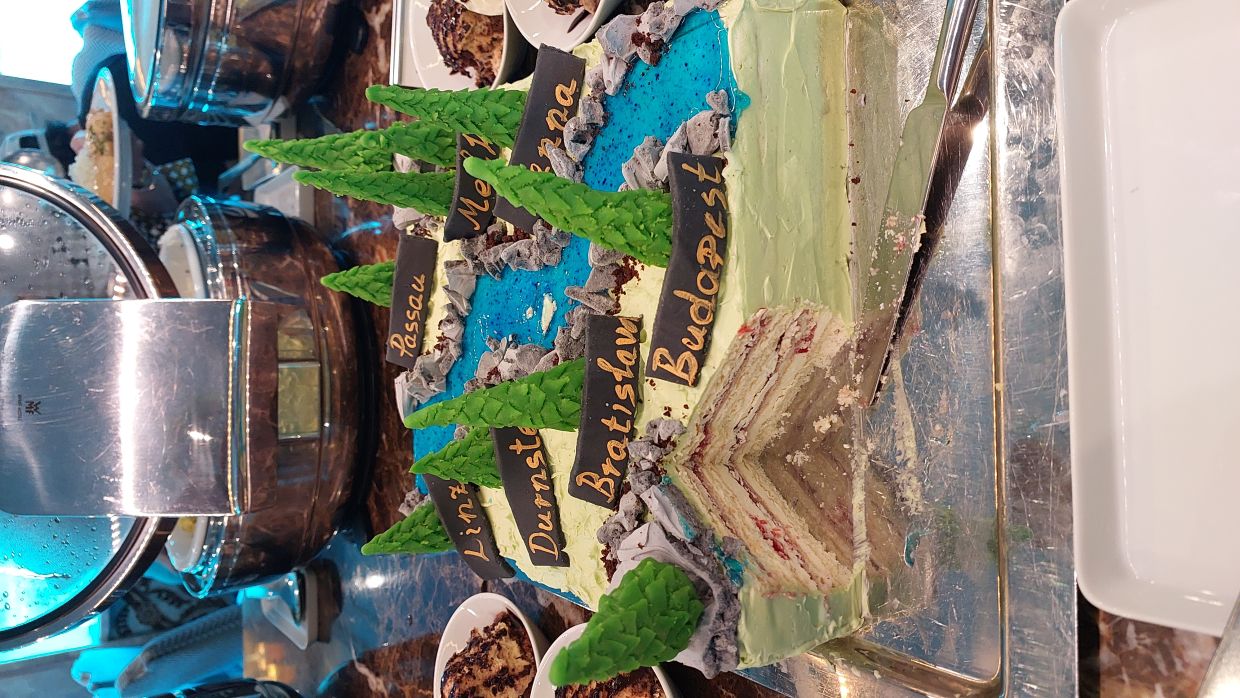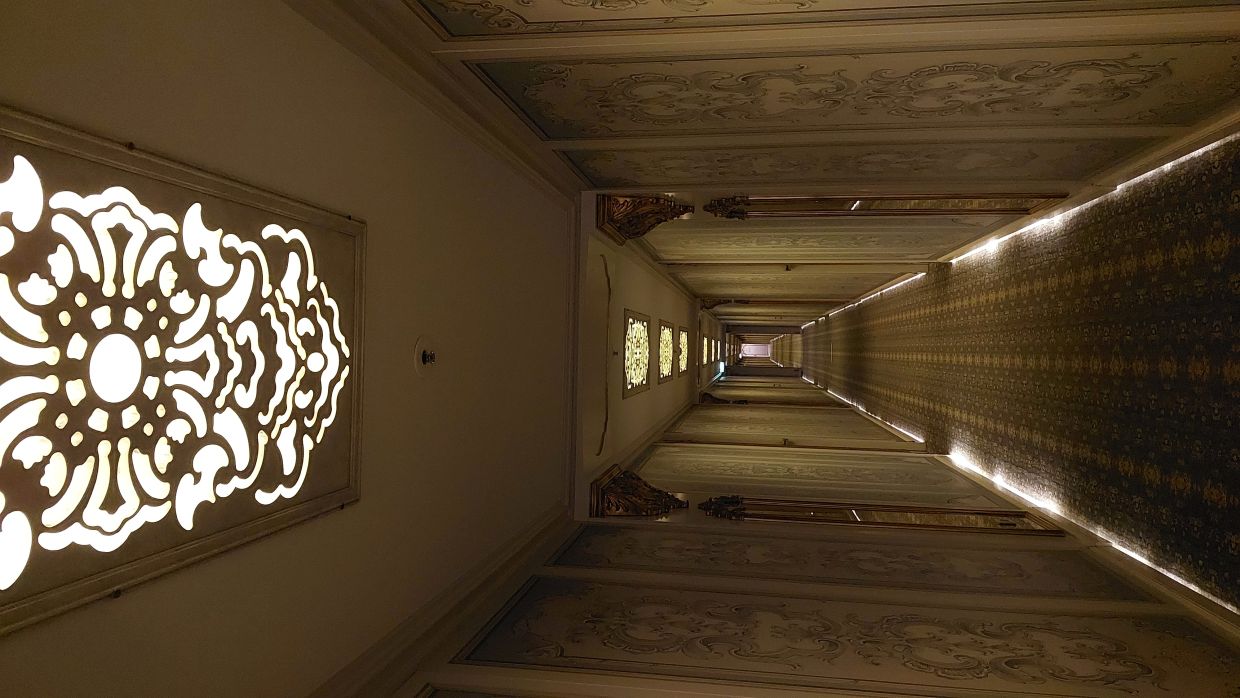Passau is also known as the city of three rivers. — Photos: MELODY L. GOH /The Star
The House of Habsburg is one of the most influential dynasties in European history. The family ruled a large part of the continent from the 15th to 20th century. It has a long and complicated history, with so many plots and twists and main players involved that no one would be chastised for being confused over who’s who and what’s what.
At least that was what I was hoping as our local tour guide went on and on about the Habsburgs one wet spring morning in Vienna, Austria. I love learning about the history of a place I’m visiting, but for something as complex as the Habsburgs, I would really rather read a book about it.
Or perhaps watch a movie, TV show or docuseries that depicts their story.
“They were a powerful dynasty but there’s also a lot of inbreeding going on in that family,” said Eva, the guide.
She had been mumbling into her microphone throughout the 90-minute tour, and I had so far struggled to keep my face from looking too bored or annoyed.
But I heard her clearly this time.
“Did you know you can tell if a European has a history of inbreeding just by looking at them?” she asked.
“Excuse me, what?” some of us in the group chimed in.
“Their jaw is very pronounced, like long and thin, and sticks out. By a lot ... like this,” Eva said, comically sticking out her jaw to show us exactly what she meant.
“It’s called the Habsburg jaw,” she continued.
With that bit of information in tow, I later walked away from the group in search of folks with this mighty distinctive jaw ...
That night, I did some light reading in my stateroom on Uniworld’s S.S. Maria Theresa, and gained more insights on the House of Habsburg, including their sizeable conquest, their influence in other parts of the world and of course, the inbreeding, which ultimately led to the dynasty’s downfall.
(It is said that many royal families back in the day would often marry their own in order to extend the lineage and stay in power. However, inbreeding causes a lot of birth defects and serious health complications that result in high mortality rates.)
The ship’s namesake is one of the most prominent figures in the Habsburg family. Maria Theresa (1717-1780) was the Archduchess of Austria, sovereign of Hungary, Croatia, Transylvania, Bohemia and several others. At 19 years old, she married Francis I or Franz Stephan of Lorraine, who later became the Holy Roman Emperor in 1745, effectively naming her the Duchess of Lorraine, Grand Duchess of Tuscany and the Holy Roman Empress.
Maria Theresa had 16 children – 11 daughters, five sons – with Franz, but only 10 survived into adulthood. Of the 16, the most well-known would be Maria Antonia, who was more popularly known as Marie-Antoinette after marrying Louis XVI of France at age 15. She was the last queen of France before the French Revolution began.
She was executed by guillotine, in case you were wondering why she was so famous (or infamous).
But back to the ship. Today, the Maria Theresa sails the Danube River every other week, between Passau in Germany and Budapest in Hungary. The eight-day Enchanting Danube cruise, run by Uniworld Boutique River Cruises, starts from either port city and sails across four countries – Germany, Austria, Slovakia and Hungary.
The Danube is the second longest river in Europe after Russia's Volga, and stretches over 10 countries. “The easiest way to remember it is like this: It begins in the Black Forest in Germany and ends in the Black Sea,” said Vincent, our lederhosen-wearing tour guide in Passau.
He told us a few interesting things about the city, like how the buildings there are colour-coded. Historically, the buildings in Passau – a city that lies on the confluence of three rivers: Danube, Ilz and Inn – were painted according to whichever trade they represented. For example, green and white were for wine cellars, red for butcheries and blue for bakeries.
“But you only need to remember the yellow. That’s for the breweries,” said our ever helpful guide.
We asked about his lederhosen (Vincent’s female colleagues who led other groups wore the dirndl). “You’re our guests and we wanted to show them off. It is also Maifest or May Festival in Germany, where people come out and dress up in lederhosen and dirndls to celebrate spring. You’re very lucky to be here during this time!”
And he was right. During our cruise, we also passed through Linz, Melk, Durnstein and Vienna in Austria, and Bratislava in Slovakia. At each stop, there were all sorts of events happening either near the ports or in the main squares.
At Linz, we witnessed the Maibaum, which is the hoisting of the maypole, a tradition from the Medieval times that is still practised today. As somebody who’s not well-versed in Medieval European practices, I was quite intrigued when I saw a bunch of mostly strapping young men carry a giant log (it looked like it was 20m long) into the main square.
There were other people walking along, including a marching band, a group of men and women dressed head-to-toe in all black, and some young ladies in short, sexy dirndls. In true kiasu fashion, I strategically placed myself in what I thought was the “best” spot, among hundreds of other onlookers at the square.
And then two policemen stood in front of me, blocking most of my view for an hour, which was how long it took to install the pole (it had to be hoisted slowly, almost foot by foot).
Luckily, I had a hearty lunch at an organic farm earlier so it wasn’t too tiring. The farm, Koeglerhof, was located on a hill about 20 minutes from the port. We first did a walking tour of Linz with our guide Marina in the morning, who then took us by bus to the farm for a cider-tasting session and lunch.
This was part of Uniworld’s “Make Travel Matter” excursion, where guests get to visit local businesses and trades who have made positive impacts within their communities over the years. On this particular Enchanting Danube cruise, there were three Make Travel Matter excursions available, including a visit to a saffron producer in the little charming town of Durnstein.
During the walking tour in Linz, Marina took us for a mid-morning snack of Linzer Torte and coffee at Jindrak, a patisserie that has been around since 1929. Marina said that there is no official record of the cake’s origins, but there are recipes found in cook books that date back about 300 years ago.
“This shop is one of the few that still uses the recipe found in those old books,” she said.
Exclusive experiences
One of the best things about Uniworld’s river cruises is that the group of passengers is usually small, as compared to other cruises. The ship’s capacity for guests is 150; there are 75 staterooms and suites situated across three decks, as well as restaurants, a lounge, a cinema and even a swimming pool.
With a smaller group, excursions are more intimate, and guests get to better immerse themselves in the experiences.
For example, we were able to enter Melk Abbey before the crowds arrived. The Unesco World Heritage Site is one of Austria’s most popular attractions thanks to its Baroque-style architecture and the fact that it is situated atop a hill, overlooking the Danube. The Benedictine abbey is also well-known for its impressive library that houses about 100,000 volumes of ancient manuscripts, texts and other printed works.
Another exclusive excursion we enjoyed was the “crowd-free” viewing of the Museum Of Art History Vienna. Unfortunately, our guide breezed through the rooms and exhibits in order to finish the session before the museum opened to the public and other tour groups, so I hung around a few of the rooms by myself to get a better feel of some of the artworks.
That's when I came across the Imperial Impressions: The Emperors And Their Court Artists exhibition, and to my delight, I found a marble bust of Emperor Leopold I and his ... Habsburg jaw.
I proceeded to check out the other sculptures and paintings in the room, hoping to spot more of this facial phenomenon, and was not disappointed.
Out in the hallway, I nearly photobombed a wedding photo session of a beautiful Asian couple. I guess you could book such things at the museum, though I have a feeling it would cost you a pretty penny to do so.
Of course, when in Vienna, you have to check out Schonbrunn Palace, the imperial residence of the Habsburgs for many years. Another Unesco World Heritage Site, the palace and its gardens are huge and would require a whole day to visit every corner.
A tip: Wear comfortable shoes if your schedule involves visiting the palaces and museums in Vienna in a single day.
At night that same day we were shuttled to the Museum Of Military History for a private Mozart and Strauss concert. It was a small ensemble with a soprano and tenor, but they did a wonderful job of entertaining us.
Also entertaining were the musicians and dancers who performed on the ship for guests. Each night featured a different performer from the port city; there was also a waltz lesson which I had a fun time ... observing from the bar.
Good to walk
Nearly all the places we visited during the cruise were pedestrian-friendly (many places in Europe are, anyway), though I am not too fond of the cobble stone streets. But cruise guests had the choice of a “gentle tour”, were you walk at a slower pace and don’t go too far from the ship, or you take a shuttle. While these are meant for folks with mobility challenges, anyone could opt for a gentle tour if they felt like it.
In Bratislava, there was a choice between a walking tour and a hike to the castle. When I saw the castle from the ship, I was confident I could handle the physical activity as it wasn’t too high up, nor was it that steep. However, as our stop in Bratislava was brief, we had to hike at a faster pace to get to the castle, and I was the last to arrive at the entrance, wheezing and sweating in the cool 15ºC weather.
It was a really humbling experience as I was overtaken by folks who were at least 10 years older, and obviously more fit, than I was.
The main square of Bratislava seemed like a very touristy area, with more souvenir shops that I could count on every alley, and many cafes, bars and restaurants around.
There were also many quirky sculptures, most of which were either in bronze or marble. A funny and popular one – called Man At Work – featured a man wearing a hard hat peering out of a manhole.
Budapest, too, had many sculptures located within the main city, including miniature ones created by the “Hungarian Banksy”, Mihaly Kolodko. Our guide, Hilde, explained that the sculptor had wanted to create a series of tiny statues as a kind of social commentary on today’s issues.
“Authorities don’t always think his work is ‘acceptable’ and have attempted to take down some of them. But whenever they did that, Mihaly would create a new one and hide it somewhere else,” she said.
True enough, during our walk we saw a number of these miniatures, one of which was Mr Bean’s famous teddy bear, hanging on the wall of what used to be the British Embassy. The artist named his work, Brexit.
A short walk further down brought us to the Michael Jackson Memorial Tree. As the story goes, the American superstar visited Budapest three times in the 1990s, and would always stay at the same suite in Kempinski Hotel. Fans would camp out at the park in front of the hotel for days just for a chance to see him.
Jackson would usually sit by the window and wave at his fans. Reportedly, he would sometimes even speak to them. After his passing, fans placed the singer’s posters, CDs and other memorabilia by a tree in the park. This continued for many months, until authorities decided to make it an official memorial site for Jackson.
To this day, the tree is still covered in photos and posters of Jackson, with fresh flowers and candles offered each week.
Hilde also took us to the Green Market, a favourite for many tourists. Here, she shared some really basic information on paprika (“We put it in everything,” was my favourite), the history of the market (I didn’t pay much attention by then), and sampled some Hungarian sausages and salami.
“This one has paprika, that one doesn’t,” she said to us, though most of us simply devoured everything without thinking much about the ingredients.
Our tours throughout the cruise involved a number of culinary excursions, which proved to be a bit much for me at times simply because there were always so many things to eat on the ship and I could never seem to ... pace myself!
It didn't help that snacks could be found everywhere on the ship, including the staterooms (mine had a jar filled with divine chocolates), the lounge and the mini cafe, and at any time too. On top of that, the bar was always open, and drinks – except for top shelf liquor and special cocktails – were free in the all-inclusive cruise.
Menus on the Maria Theresa were often thematic, featuring dishes and ingredients special to each city that we docked at. Since asparagus was also in season at the time, and Germans and Austrians are, shall we say, “passionate” about their asparagus, we had a heaping helping of them on the ship too.
Or at least, I did. Especially the white ones.
I steered clear of any Asian or Asian-inspired dishes throughout the whole cruise, however, because I wanted my experience to be as European as it can be, and “satay fried rice with tofu” was not it.
Meal times on the ship for me was a little daunting at first. Since I was travelling solo, I encountered many curious looks from the other passengers, who were mostly couples in their, on average, retirement age. One lady said I was very brave for travelling by myself, while another told me that she “could never do what you’re doing”. I wasn’t sure if she had meant my solo travelling or solo dining ... but I just smiled and nodded.
Thankfully, the service team were great and professional; they figured out who's who, and what your preferences are by Day 2.
Many of the guests were also friendly and outgoing, inviting me to join their table either at the dining hall (called the Baroque Restaurant) or at the lounge (Habsburg Salon).
During the captain’s welcome reception on the first day, I was resigned to sitting all by myself at the back of the lounge, pretending to read a book so no one would notice me, when a lady wearing a fancy hat plonked herself next to me. “Why don’t you sit there,” she said to a fairly young lady, pointing to a chair nearby.
“Hello! I am Pat,” she said to me.
I introduced myself to her, and then looked at the younger woman. “This is my granddaughter, Katja,” said Pat.
“K-A-T-J-A?” I asked.
“Yes!” Pat answered, and then went on to tell me the story of how Katja got her name, how Katja had just finished a semester at a university in Barcelona, Spain, and how she took Katja on the trip as a graduation gift.
I guess she missed her granddaughter while she was away, and was happy to be reunited.
Pat, or Patricia Fair, is a sprightly 80-year-old lady from the United States who had travelled the world with her late husband when they were younger. Now, she hopes her grandchildren would also be able to do the same.
Since I could easily connect with Pat and Katja – as well as a few others including American professors/educators Kat and Lynn, New Zealand couple Don and Catherine, a couple from South Africa, and another one from Australia – I am pretty sure it would be easy for other solo travellers to find their “tribe” on a cruise like this. Making friends is important when you’re along on a week-long cruise (or tour) because it helps you to relax and enjoy yourself, even if a little bit.
Besides, it’s always a lot more fun getting hammered on free cocktails (I recommend the “apple strudel”) and wine when you’re with friends, new or otherwise.
> For more pictures, check out the Enchanting Danube media gallery below.









